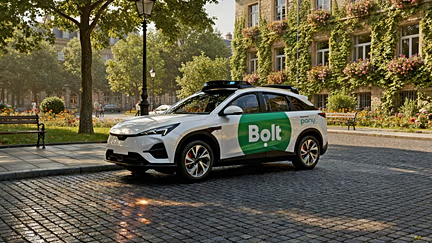Estonian-Chinese Partnership Drives onto European Streets
Europe inches closer to robotaxi reality. A new deal between Bolt and Pony.ai stages autonomous rides for multiple European cities. The partnership starts with pilot routes. It blossoms from there if tests go well. Bolt+Pony moves Europe deeper into the international race with Waymo, Tesla, and a rising group of China-backed AV companies.
This move arrives as governments update rules, investors chase new mobility wins, and riders grow more comfortable with driverless travel.
What’s Happening & Why This Matters
A New Alliance to Bring Robotaxis to Europe

The partnership between Bolt and Pony.ai blends a popular European ride-hailing app with an autonomous driving powerhouse. Bolt supplies access to millions of riders. Pony.ai supplies AV systems proven across China and the U.S. Together, they plan staged launches that introduce driverless cars on selected urban routes in 2025.
The pilot phase focuses on safety validation, local mapping, and operational training. Cities are not named yet, but the companies cite “high-density metros with strong public-transit overlap.” That usually means places like Berlin, Paris, Madrid, or Warsaw.
Why Companies Are Racing Into Europe
Europe is attractive terrain for autonomous vehicles. Regulators in countries like Germany and France now permit Level 4 testing under supervised conditions. These rules are slower than China’s but more predictable than the patchwork in the United States.

Momenta already partners with prominent German automakers. Baidu runs autonomous pilots in multiple Chinese cities. Uber and Lyft are exploring long-term AV integrations. The Bolt–Pony.ai alliance fits into the initiative.
Analysts say the timing is strategic. Europe needs more mobility options. Cities want safer streets. Rising labor shortages in transport add pressure. And the continent does not want to fall behind the U.S. and China in autonomous systems.
A Test of Pony.ai’s Global Expansion Strategy
This launch is a key waypoint for Pony.ai. The company wants to prove that its autonomous stack is viable across cultures, roads, rules, and habits. That includes narrow medieval streets, roundabouts, aggressive lane merges, cyclists, and complex pedestrian zones. Each new market requires heavy simulation, localized behavior modeling, and new safety audits.

A spokesperson for Pony.ai said, “Europe offers an ideal environment for next-generation autonomy. We expect our system to adapt quickly to these dynamic conditions.”
Bolt called the partnership “the next chapter” of its long-term transport strategy.
The bigger picture: Europe now becomes the proving ground where global players test driverless reliability at scale.
TF Summary: What’s Next
Bolt and Pony.ai now prepare vehicles, routes, and permits. Their first robotaxi pilots will reveal how well the technology handles Europe’s dense urban patterns. If the experience feels smooth, safe, and predictable, the rollouts grow quickly. Expect new entrants, new alliances, and new regulatory debates as the continent’s autonomous mobility scene heats up.
MY FORECAST: Europe becomes the world’s third major robotaxi battleground. U.S. companies push harder. China-backed AV firms accelerate. Local players emerge. Ride-hailing apps reshape themselves around automation. And the real test becomes trust: whichever company wins rider confidence wins Europe.
— Text-to-Speech (TTS) provided by gspeech


